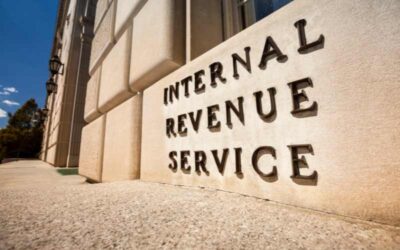The Employee Retention Tax Credit (ERTC) helped employers bolster cash flow and avoided layoffs during the most uncertain periods of COVID. The confluence of state issued forced business closures and stay at home orders created adverse conditions for many Minnesota companies. The program provided a desperately needed capital infusion to struggling businesses. By the time it ended for most taxpayers on September 30, 2021, it was one of the most valuable tax credits at employers’ disposal, allowing businesses to recoup thousands of dollars per year, per employee.
As the rules changed for who could take the credit, and for what amounts, millions of companies applied for the ERTC retroactively. This meant submitting an amended paper version of Form 941X. While a common practice, the staffing shortages at the IRS have created historical backlogs results in unusually long delays in processing these returns and the corresponding credit. This inconvenience created some unexpected issues which include the improper assessment of penalties on underpaid quarterly taxes. The situation demanded attention and the IRS responded by issuing new penalty relief for impacted companies. To help clients, prospects, and others, Smith Schafer & Associates has provided a summary of the key details below.
A Brief History of the Employee Retention Tax Credit
The Employee Retention Tax Credit (ERTC) was available as a temporary tax credit to eligible employers for wages paid between March 13, 2020 and September 30, 2021 – and until December 31, 2021 for eligible recovery startup businesses. Its real value lied in its status as a refundable tax credit, meaning employers could generate a negative tax liability for the quarter or the year.
At first, employers were permitted to claim $5,000 per employee for the whole year, or 50 percent of eligible wages up to $10,000. And initially employers could not claim the ERTC in the same quarter they received Paycheck Protection Program (PPP) funds. Guidance was later reversed in the Taxpayer Certainty and Disaster Tax Relief Act (December 2020) so that employers could qualify for both PPP and the ERTC in the same quarter provided the employer didn’t double-dip relief funds and relief tax credits for the same payroll expense.
Then, in 2021, the ERTC expanded to allow employers to claim up to $7,000 per employee, per quarter, or up to 70 percent of eligible wages up to $10,000. When it was slated to expire at the end of 2021, that meant a potential annual tax refund of up to $28,000 per employee.
Note that in both years, employers still had to meet criteria for reductions in gross receipts and/or government-issued closure.
The bottom line? Employers, left confused about what tax incentives were available and when, filed hundreds of thousands of amended quarterly payroll tax forms in 2021. And then they waited.
ERTC Penalty Relief on the Way
In March 2022, Congress held a hearing with IRS Commissioner Charles Rettig. At that time, Congress noted that many small businesses and nonprofits were still waiting on their ERTC refunds from the first, second, and third quarters of 2020. Automated processing for paper returns wasn’t, and still isn’t, an option for the understaffed and overworked IRS.
During that hearing, legislators pressed for relief. As Rep. Kevin Hern said, “In these cases, companies will be filing their April 2022 returns with reduced wages, but they still have not received the checks for the ERTC credit. Ultimately what this means is taxpayers are paying tax on income they have never received. Not only are small businesses liable for the tax on reduced wages, but they are also liable for the safe harbor on their estimated taxes, which is inflated due to the reduced wages.”
About one month later, the IRS did indeed issue relief for ERTC penalties.
Detailed Guidance for IRS Penalty Relief
In its April 18, 2022 news release, the IRS noted: “taxpayers that claimed the ERTC retroactively and filed an amended income tax return reducing their deduction for the ERTC qualified wages paid or incurred in the tax year for which the ERTC is retroactively claimed have an increased income tax liability but may not yet have received their ERTC refund.”
To help these employers, the IRS is allowing relief from penalties for failure to pay taxes provided certain conditions are met.
The First Time Penalty Abatement Program is available if the employer meets all three conditions below.
- No penalties in the three previous tax years or didn’t previously have to file taxes.
- Filed all currently required returns or timely filed an extension.
- Paid, or arranged to pay, any tax due.
Employers still waiting for their ERTC refunds from the IRS are eligible for relief for unpaid taxes.
Beyond that, penalty relief is available if the employer can demonstrate reasonable cause. Reasonable cause would mean that the employer took steps to meet its tax obligations but was unable to do so. Willful neglect doesn’t count. Failure to pay taxes on its own doesn’t constitute reasonable cause, but not receiving the ERTC tax refund would be.
In judging penalty waivers for reasonable cause, the IRS will look at event timing, facts, and circumstances, and how those circumstances may have changed. Supporting documentation is required. Interest usually can’t be waived for penalty relief due to reasonable cause.
The last option to apply for ERTC penalty relief is via statutory exception. This can get more complicated as the employer would need to show that it relied on written IRS guidance, which led to the penalty. Then, once a copy of the incorrect IRS advice is produced, the employer would need to provide a report or other documentation related to the penalty.
Form 843 is then filed with the IRS to request penalty relief. If granted, interest would be waived, unlike with penalty relief from reasonable cause.
If an employer receives a notice from the IRS showing a penalty, the first step is to check if it is correct. If so, employers can follow the notice’s instructions – it might be that a phone call is all that’s needed. Remember, it is important to deal with these notices quickly, as interest can accrue daily depending on the penalty.
Contact Us
The recently announced penalty relief will provide a sigh of relief for many Minnesota businesses. However, it is important to carefully review the recently issued guidance to ensure your business will qualify. If you have questions about the information outlined above or need assistance retroactively claiming the ERTC, Smith Schafer & Associates can help. For additional information, click here to contact us. We look forward to speaking with you soon.



